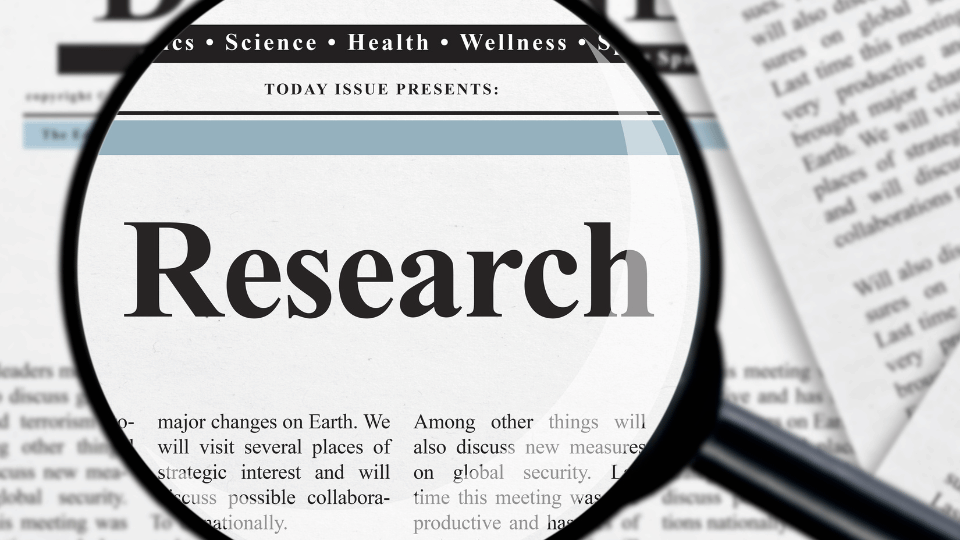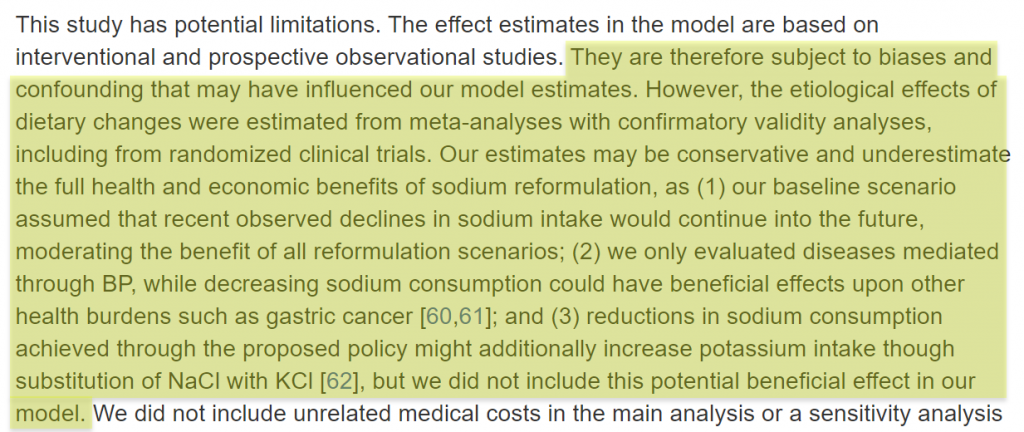How to Write Limitations of the Study (with examples)
This blog emphasizes the importance of recognizing and effectively writing about limitations in research. It discusses the types of limitations, their significance, and provides guidelines for writing about them, highlighting their role in advancing scholarly research.
Updated on August 24, 2023

No matter how well thought out, every research endeavor encounters challenges. There is simply no way to predict all possible variances throughout the process.
These uncharted boundaries and abrupt constraints are known as limitations in research . Identifying and acknowledging limitations is crucial for conducting rigorous studies. Limitations provide context and shed light on gaps in the prevailing inquiry and literature.
This article explores the importance of recognizing limitations and discusses how to write them effectively. By interpreting limitations in research and considering prevalent examples, we aim to reframe the perception from shameful mistakes to respectable revelations.

What are limitations in research?
In the clearest terms, research limitations are the practical or theoretical shortcomings of a study that are often outside of the researcher’s control . While these weaknesses limit the generalizability of a study’s conclusions, they also present a foundation for future research.
Sometimes limitations arise from tangible circumstances like time and funding constraints, or equipment and participant availability. Other times the rationale is more obscure and buried within the research design. Common types of limitations and their ramifications include:
- Theoretical: limits the scope, depth, or applicability of a study.
- Methodological: limits the quality, quantity, or diversity of the data.
- Empirical: limits the representativeness, validity, or reliability of the data.
- Analytical: limits the accuracy, completeness, or significance of the findings.
- Ethical: limits the access, consent, or confidentiality of the data.
Regardless of how, when, or why they arise, limitations are a natural part of the research process and should never be ignored . Like all other aspects, they are vital in their own purpose.
Why is identifying limitations important?
Whether to seek acceptance or avoid struggle, humans often instinctively hide flaws and mistakes. Merging this thought process into research by attempting to hide limitations, however, is a bad idea. It has the potential to negate the validity of outcomes and damage the reputation of scholars.
By identifying and addressing limitations throughout a project, researchers strengthen their arguments and curtail the chance of peer censure based on overlooked mistakes. Pointing out these flaws shows an understanding of variable limits and a scrupulous research process.
Showing awareness of and taking responsibility for a project’s boundaries and challenges validates the integrity and transparency of a researcher. It further demonstrates the researchers understand the applicable literature and have thoroughly evaluated their chosen research methods.
Presenting limitations also benefits the readers by providing context for research findings. It guides them to interpret the project’s conclusions only within the scope of very specific conditions. By allowing for an appropriate generalization of the findings that is accurately confined by research boundaries and is not too broad, limitations boost a study’s credibility .
Limitations are true assets to the research process. They highlight opportunities for future research. When researchers identify the limitations of their particular approach to a study question, they enable precise transferability and improve chances for reproducibility.
Simply stating a project’s limitations is not adequate for spurring further research, though. To spark the interest of other researchers, these acknowledgements must come with thorough explanations regarding how the limitations affected the current study and how they can potentially be overcome with amended methods.
How to write limitations
Typically, the information about a study’s limitations is situated either at the beginning of the discussion section to provide context for readers or at the conclusion of the discussion section to acknowledge the need for further research. However, it varies depending upon the target journal or publication guidelines.
Don’t hide your limitations
It is also important to not bury a limitation in the body of the paper unless it has a unique connection to a topic in that section. If so, it needs to be reiterated with the other limitations or at the conclusion of the discussion section. Wherever it is included in the manuscript, ensure that the limitations section is prominently positioned and clearly introduced.
While maintaining transparency by disclosing limitations means taking a comprehensive approach, it is not necessary to discuss everything that could have potentially gone wrong during the research study. If there is no commitment to investigation in the introduction, it is unnecessary to consider the issue a limitation to the research. Wholly consider the term ‘limitations’ and ask, “Did it significantly change or limit the possible outcomes?” Then, qualify the occurrence as either a limitation to include in the current manuscript or as an idea to note for other projects.
Writing limitations
Once the limitations are concretely identified and it is decided where they will be included in the paper, researchers are ready for the writing task. Including only what is pertinent, keeping explanations detailed but concise, and employing the following guidelines is key for crafting valuable limitations:
1) Identify and describe the limitations : Clearly introduce the limitation by classifying its form and specifying its origin. For example:
- An unintentional bias encountered during data collection
- An intentional use of unplanned post-hoc data analysis
2) Explain the implications : Describe how the limitation potentially influences the study’s findings and how the validity and generalizability are subsequently impacted. Provide examples and evidence to support claims of the limitations’ effects without making excuses or exaggerating their impact. Overall, be transparent and objective in presenting the limitations, without undermining the significance of the research.
3) Provide alternative approaches for future studies : Offer specific suggestions for potential improvements or avenues for further investigation. Demonstrate a proactive approach by encouraging future research that addresses the identified gaps and, therefore, expands the knowledge base.
Whether presenting limitations as an individual section within the manuscript or as a subtopic in the discussion area, authors should use clear headings and straightforward language to facilitate readability. There is no need to complicate limitations with jargon, computations, or complex datasets.
Examples of common limitations
Limitations are generally grouped into two categories , methodology and research process .
Methodology limitations
Methodology may include limitations due to:
- Sample size
- Lack of available or reliable data
- Lack of prior research studies on the topic
- Measure used to collect the data
- Self-reported data

The researcher is addressing how the large sample size requires a reassessment of the measures used to collect and analyze the data.
Research process limitations
Limitations during the research process may arise from:
- Access to information
- Longitudinal effects
- Cultural and other biases
- Language fluency
- Time constraints

The author is pointing out that the model’s estimates are based on potentially biased observational studies.
Final thoughts
Successfully proving theories and touting great achievements are only two very narrow goals of scholarly research. The true passion and greatest efforts of researchers comes more in the form of confronting assumptions and exploring the obscure.
In many ways, recognizing and sharing the limitations of a research study both allows for and encourages this type of discovery that continuously pushes research forward. By using limitations to provide a transparent account of the project's boundaries and to contextualize the findings, researchers pave the way for even more robust and impactful research in the future.
Charla Viera, MS
See our "Privacy Policy"
Ensure your structure and ideas are consistent and clearly communicated
Pair your Premium Editing with our add-on service Presubmission Review for an overall assessment of your manuscript.

Research Limitations: Key Insights and Examples
Introduction.
Research is a fundamental component of academic and professional fields, driving innovation, informing policy, and enhancing our understanding of complex issues. However, every research endeavor comes with its own set of limitations that can impact the validity and applicability of its findings. Understanding these research limitations is crucial for researchers, practitioners, and policymakers alike, as it allows for a more nuanced interpretation of results and encourages critical thinking about the implications of the research.

In this article, we will explore the meaning of research limitations, common examples, impacts and strategies to address them, ultimately providing key insights that can enhance the quality and reliability of research outcomes.
Defining Research Limitations
Research limitations refer to the inherent weaknesses or constraints within a study that may affect its outcomes and conclusions . These limitations can arise from various factors, including the research design, methodology , sample size, and even the researcher’s biases. In essence, they represent the boundaries of the research, highlighting areas where the findings may not be fully generalizable or applicable. Understanding these limitations is crucial, as they provide context for interpreting the results and assessing the validity of the research.
In the realm of academic and scientific inquiry, research limitations can be categorized into two main types: methodological limitations and researcher-related limitations . Methodological limitations stem from the design and execution of the study, such as the choice of data collection methods , sample size, and the overall research framework .
On the other hand, researcher-related limitations may include biases , lack of experience, or insufficient resources that can influence the research process. By clearly defining these limitations, researchers can better communicate the scope and reliability of their findings , ultimately contributing to a more nuanced understanding of the research landscape.
Common Research Limitations Examples
Research limitations can manifest in various forms, impacting the overall validity and reliability of a study.
Restricted Access to Information
One common limitation is the restricted access to information, which can hinder researchers from obtaining comprehensive data necessary for thorough analysis. For instance, in studies involving sensitive topics, researchers may face challenges in gathering data due to privacy concerns or institutional restrictions. Additionally, limited access to reliable data sources can lead to a narrow scope of research, ultimately affecting the conclusions drawn from the study.
Sample Size Issues
Another prevalent limitation is the issue of sample size. A small sample may not accurately represent the larger population, leading to skewed results and reduced generalizability.
Time Constraints
Furthermore, time constraints often force researchers to rush their studies, potentially compromising the depth and quality of their findings. This is particularly evident in longitudinal studies, where the effects of time on variables are crucial for understanding trends and patterns.
Cultural Biases and Language Fluency
Lastly, cultural biases and language fluency can also pose significant challenges, as they may influence the interpretation of data and the researcher’s perspective, ultimately affecting the study’s outcomes.
Impact of Research Limitations on Findings
The importance of recognizing research limitations.
Research limitations can significantly influence the interpretation and applicability of study findings. When researchers fail to acknowledge these limitations, they risk presenting a skewed understanding of their results, which can mislead stakeholders and the broader scientific community. For instance, if a study’s sample size is too small or not representative of the target population, the conclusions drawn may not be generalizable, leading to erroneous assumptions about the wider implications of the research. Thus, recognizing and articulating these limitations is crucial for maintaining the integrity of the research process.
Enhancing Research Credibility through Transparency
Moreover, the impact of research limitations extends beyond mere interpretation; it can also affect the credibility of the research itself. Acknowledging limitations demonstrates transparency and honesty, which can enhance the trustworthiness of the findings. Conversely, neglecting to address these weaknesses may lead to skepticism among peers and reviewers, potentially undermining the study’s contributions to the field.
Strategies to Address Research Limitations
Clearly identify and articulate limitations.
One effective strategy is to clearly identify and articulate the limitations at the outset of the research. By doing so, researchers can set realistic expectations for their findings and guide readers in interpreting the results.
Using Mixed-Methods to Mitigate Research Limitations
Additionally, employing a mixed-methods approach can help mitigate certain limitations by combining qualitative and quantitative data, thus providing a more comprehensive understanding of the research question . This strategy not only enriches the data but also allows for triangulation, which can validate findings across different methodologies.
Proposing Future Research Directions
Another important strategy is to propose future research directions that can build upon the limitations identified in the current study. By suggesting specific areas for further investigation, researchers can encourage others to explore unresolved questions and enhance the overall body of knowledge.
Utilizing Robust Data Collection
Furthermore, utilizing robust data collection methods and ensuring a diverse sample can help reduce biases and improve the generalizability of the findings.
Strengthening Research through Peer Review and Feedback
Lastly, engaging in peer review and seeking feedback from colleagues can provide valuable insights into potential limitations that may have been overlooked, ultimately strengthening the research design.
In conclusion, understanding research limitations is crucial for both researchers and consumers of research. Acknowledging these limitations not only enhances the credibility of the study but also provides a clearer context for interpreting the findings. By recognizing the constraints under which research is conducted, stakeholders can make more informed decisions and apply the results more judiciously.
Furthermore, embracing the discussion of limitations fosters a culture of transparency and continuous improvement in research methodologies. As the landscape of research evolves, so too does the need for a nuanced understanding of its limitations. Future research endeavors should prioritize the identification and articulation of limitations, ensuring that they are not merely an afterthought but an integral part of the research narrative. By doing so, researchers can contribute to a more robust body of knowledge that acknowledges the complexities of their work, ultimately leading to more reliable and applicable findings in various fields.
Leave a Comment Cancel reply
Save my name, email, and website in this browser for the next time I comment.
Related articles

Ultimate Guide to Excelling in Empirical Research: Learn the 3 Types and Effective Format!

Understanding 6 Essential Steps in the Peer Review Process: Your Ultimate Guide to Success!

The Challenge of Publication Bias in Research: 4 Best Practices to Overcoming It

Craft a Compelling Research Background: Ultimate Guide to 4 Best Strategies!

Mastering Research Papers Citation : Top 6 Essential Guides!

7 Effective Ways to Find Recent Research Papers: A Comprehensive Guide

Research Sites: The Ultimate Guide to Understanding and Selecting the Right Location For Your Study

How to Formulate Research Questions in a Research Proposal? Discover The No. 1 Easiest Template Here!

Research Limitations 101 📖
A Plain-Language Explainer (With Practical Examples)
By: Derek Jansen (MBA) | Expert Reviewer: Dr. Eunice Rautenbach | May 2024
Research limitations are one of those things that students tend to avoid digging into, and understandably so. No one likes to critique their own study and point out weaknesses. Nevertheless, being able to understand the limitations of your study – and, just as importantly, the implications thereof – a is a critically important skill.
In this post, we’ll unpack some of the most common research limitations you’re likely to encounter, so that you can approach your project with confidence.
Overview: Research Limitations 101
- What are research limitations ?
- Access – based limitations
- Temporal & financial limitations
- Sample & sampling limitations
- Design limitations
- Researcher limitations
- Key takeaways
What (exactly) are “research limitations”?
At the simplest level, research limitations (also referred to as “the limitations of the study”) are the constraints and challenges that will invariably influence your ability to conduct your study and draw reliable conclusions .
Research limitations are inevitable. Absolutely no study is perfect and limitations are an inherent part of any research design. These limitations can stem from a variety of sources , including access to data, methodological choices, and the more mundane constraints of budget and time. So, there’s no use trying to escape them – what matters is that you can recognise them.
Acknowledging and understanding these limitations is crucial, not just for the integrity of your research, but also for your development as a scholar. That probably sounds a bit rich, but realistically, having a strong understanding of the limitations of any given study helps you handle the inevitable obstacles professionally and transparently, which in turn builds trust with your audience and academic peers.
Simply put, recognising and discussing the limitations of your study demonstrates that you know what you’re doing , and that you’ve considered the results of your project within the context of these limitations. In other words, discussing the limitations is a sign of credibility and strength – not weakness. Contrary to the common misconception, highlighting your limitations (or rather, your study’s limitations) will earn you (rather than cost you) marks.
So, with that foundation laid, let’s have a look at some of the most common research limitations you’re likely to encounter – and how to go about managing them as effectively as possible.
Need a helping hand?
Limitation #1: Access To Information
One of the first hurdles you might encounter is limited access to necessary information. For example, you may have trouble getting access to specific literature or niche data sets. This situation can manifest due to several reasons, including paywalls, copyright and licensing issues or language barriers.
To minimise situations like these, it’s useful to try to leverage your university’s resource pool to the greatest extent possible. In practical terms, this means engaging with your university’s librarian and/or potentially utilising interlibrary loans to get access to restricted resources. If this sounds foreign to you, have a chat with your librarian 🙃
In emerging fields or highly specific study areas, you might find that there’s very little existing research (i.e., literature) on your topic. This scenario, while challenging, also offers a unique opportunity to contribute significantly to your field , as it indicates that there’s a significant research gap .
All of that said, be sure to conduct an exhaustive search using a variety of keywords and Boolean operators before assuming that there’s a lack of literature. Also, remember to snowball your literature base . In other words, scan the reference lists of the handful of papers that are directly relevant and then scan those references for more sources. You can also consider using tools like Litmaps and Connected Papers (see video below).
Limitation #2: Time & Money
Almost every researcher will face time and budget constraints at some point. Naturally, these limitations can affect the depth and breadth of your research – but they don’t need to be a death sentence.
Effective planning is crucial to managing both the temporal and financial aspects of your study. In practical terms, utilising tools like Gantt charts can help you visualise and plan your research timeline realistically, thereby reducing the risk of any nasty surprises. Always take a conservative stance when it comes to timelines, especially if you’re new to academic research. As a rule of thumb, things will generally take twice as long as you expect – so, prepare for the worst-case scenario.
If budget is a concern, you might want to consider exploring small research grants or adjusting the scope of your study so that it fits within a realistic budget. Trimming back might sound unattractive, but keep in mind that a smaller, well-planned study can often be more impactful than a larger, poorly planned project.
If you find yourself in a position where you’ve already run out of cash, don’t panic. There’s usually a pivot opportunity hidden somewhere within your project. Engage with your research advisor or faculty to explore potential solutions – don’t make any major changes without first consulting your institution.

Limitation #3: Sample Size & Composition
As we’ve discussed before , the size and representativeness of your sample are crucial , especially in quantitative research where the robustness of your conclusions often depends on these factors. All too often though, students run into issues achieving a sufficient sample size and composition.
To ensure adequacy in terms of your sample size, it’s important to plan for potential dropouts by oversampling from the outset . In other words, if you aim for a final sample size of 100 participants, aim to recruit 120-140 to account for unexpected challenges. If you still find yourself short on participants, consider whether you could complement your dataset with secondary data or data from an adjacent sample – for example, participants from another city or country. That said, be sure to engage with your research advisor before making any changes to your approach.
A related issue that you may run into is sample composition. In other words, you may have trouble securing a random sample that’s representative of your population of interest. In cases like this, you might again want to look at ways to complement your dataset with other sources, but if that’s not possible, it’s not the end of the world. As with all limitations, you’ll just need to recognise this limitation in your final write-up and be sure to interpret your results accordingly. In other words, don’t claim generalisability of your results if your sample isn’t random.

Limitation #4: Methodological Limitations
As we alluded earlier, every methodological choice comes with its own set of limitations . For example, you can’t claim causality if you’re using a descriptive or correlational research design. Similarly, as we saw in the previous example, you can’t claim generalisability if you’re using a non-random sampling approach.
Making good methodological choices is all about understanding (and accepting) the inherent trade-offs . In the vast majority of cases, you won’t be able to adopt the “perfect” methodology – and that’s okay. What’s important is that you select a methodology that aligns with your research aims and research questions , as well as the practical constraints at play (e.g., time, money, equipment access, etc.). Just as importantly, you must recognise and articulate the limitations of your chosen methods, and justify why they were the most suitable, given your specific context.
Limitation #5: Researcher (In)experience
A discussion about research limitations would not be complete without mentioning the researcher (that’s you!). Whether we like to admit it or not, researcher inexperience and personal biases can subtly (and sometimes not so subtly) influence the interpretation and presentation of data within a study. This is especially true when it comes to dissertations and theses , as these are most commonly undertaken by first-time (or relatively fresh) researchers.
When it comes to dealing with this specific limitation, it’s important to remember the adage “ We don’t know what we don’t know ”. In other words, recognise and embrace your (relative) ignorance and subjectivity – and interpret your study’s results within that context . Simply put, don’t be overly confident in drawing conclusions from your study – especially when they contradict existing literature.
Cultivating a culture of reflexivity within your research practices can help reduce subjectivity and keep you a bit more “rooted” in the data. In practical terms, this simply means making an effort to become aware of how your perspectives and experiences may have shaped the research process and outcomes.
As with any new endeavour in life, it’s useful to garner as many outsider perspectives as possible. Of course, your university-assigned research advisor will play a large role in this respect, but it’s also a good idea to seek out feedback and critique from other academics. To this end, you might consider approaching other faculty at your institution, joining an online group, or even working with a private coach .

Key Takeaways
Understanding and effectively navigating research limitations is key to conducting credible and reliable academic work. By acknowledging and addressing these limitations upfront, you not only enhance the integrity of your research, but also demonstrate your academic maturity and professionalism.
Whether you’re working on a dissertation, thesis or any other type of formal academic research, remember the five most common research limitations and interpret your data while keeping them in mind.
- Access to Information (literature and data)
- Time and money
- Sample size and composition
- Research design and methodology
- Researcher (in)experience and bias
If you need a hand identifying and mitigating the limitations within your study, check out our 1:1 private coaching service .

Psst… there’s more!
This post is an extract from our bestselling short course, Methodology Bootcamp . If you want to work smart, you don't want to miss this .
Submit a Comment Cancel reply
Your email address will not be published. Required fields are marked *
Save my name, email, and website in this browser for the next time I comment.
- Print Friendly
- Affiliate Program

- UNITED STATES
- 台灣 (TAIWAN)
- TÜRKIYE (TURKEY)
- Academic Editing Services
- - Research Paper
- - Journal Manuscript
- - Dissertation
- - College & University Assignments
- Admissions Editing Services
- - Application Essay
- - Personal Statement
- - Recommendation Letter
- - Cover Letter
- - CV/Resume
- Business Editing Services
- - Business Documents
- - Report & Brochure
- - Website & Blog
- Writer Editing Services
- - Script & Screenplay
- Our Editors
- Client Reviews
- Editing & Proofreading Prices
- Wordvice Points
- Partner Discount
- Plagiarism Checker
APA Citation Generator
MLA Citation Generator
Chicago Citation Generator
Vancouver Citation Generator
- - APA Style
- - MLA Style
- - Chicago Style
- - Vancouver Style
- Writing & Editing Guide
- Academic Resources
- Admissions Resources
Limitations of the Study – How to Write & Examples
What are the limitations of a study?
Study limitations essentially detail any flaws or shortcomings in the methodology or study design that may affect the interpretation of your research results. Study limitations can exist due to constraints on research design, methodology, materials, etc., and these factors may impact the findings of your study. However, researchers are often reluctant to discuss the limitations of their study in their papers, feeling that bringing up limitations may undermine its research value in the eyes of readers and reviewers.
In spite of the impact it might have (and perhaps because of it) you should clearly acknowledge any limitations in your research paper in order to show readers—whether journal editors, other researchers, or the general public—that you are aware of these limitations and to explain how they affect the conclusions that can be drawn from the research.
In this article, we provide some guidelines for writing about research limitations, show examples of some frequently seen study limitations, and recommend techniques for presenting this information. And after you have finished drafting and have received manuscript editing for your work, you still might want to follow this up with academic editing before submitting your work to your target journal.
Why do I need to include limitations of research in my paper?
Although limitations address the potential weaknesses of a study, writing about them toward the end of your paper actually strengthens your study by identifying any problems before other researchers or reviewers find them.
Furthermore, pointing out study limitations shows that you’ve considered the impact of research weakness thoroughly and have an in-depth understanding of your research topic. Since all studies face limitations, being honest and detailing these limitations will impress researchers and reviewers more than ignoring them.

Where should I put the limitations of the study in my paper?
Some limitations might be evident to researchers before the start of the study, while others might become clear while you are conducting the research. Whether these limitations are anticipated or not, and whether they are due to research design or to methodology, they should be clearly identified and discussed in the discussion section —the final section of your paper. Most journals now require you to include a discussion of potential limitations of your work, and many journals now ask you to place this “limitations section” at the very end of your article.
Some journals ask you to also discuss the strengths of your work in this section, and some allow you to freely choose where to include that information in your discussion section—make sure to always check the author instructions of your target journal before you finalize a manuscript and submit it for peer review .
Limitations of the Study Examples
There are several reasons why limitations of research might exist. The two main categories of limitations are those that result from the methodology and those that result from issues with the researcher(s).
Common Methodological Limitations of Studies
Limitations of research due to methodological problems can be addressed by clearly and directly identifying the potential problem and suggesting ways in which this could have been addressed—and SHOULD be addressed in future studies. The following are some major potential methodological issues that can impact the conclusions researchers can draw from the research.
1. Issues with research samples and selection
Sampling errors occur when a probability sampling method is used to select a sample, but that sample does not reflect the general population or appropriate population concerned. This results in limitations of your study known as “sample bias” or “selection bias.”
For example, if you conducted a survey to obtain your research results, your samples (participants) were asked to respond to the survey questions. However, you might have had limited ability to gain access to the appropriate type or geographic scope of participants. In this case, the people who responded to your survey questions may not truly be a random sample.
2. Insufficient sample size for statistical measurements
When conducting a study, it is important to have a sufficient sample size in order to draw valid conclusions. The larger the sample, the more precise your results will be. If your sample size is too small, it will be difficult to identify significant relationships in the data.
Normally, statistical tests require a larger sample size to ensure that the sample is considered representative of a population and that the statistical result can be generalized to a larger population. It is a good idea to understand how to choose an appropriate sample size before you conduct your research by using scientific calculation tools—in fact, many journals now require such estimation to be included in every manuscript that is sent out for review.
3. Lack of previous research studies on the topic
Citing and referencing prior research studies constitutes the basis of the literature review for your thesis or study, and these prior studies provide the theoretical foundations for the research question you are investigating. However, depending on the scope of your research topic, prior research studies that are relevant to your thesis might be limited.
When there is very little or no prior research on a specific topic, you may need to develop an entirely new research typology. In this case, discovering a limitation can be considered an important opportunity to identify literature gaps and to present the need for further development in the area of study.
4. Methods/instruments/techniques used to collect the data
After you complete your analysis of the research findings (in the discussion section), you might realize that the manner in which you have collected the data or the ways in which you have measured variables has limited your ability to conduct a thorough analysis of the results.
For example, you might realize that you should have addressed your survey questions from another viable perspective, or that you were not able to include an important question in the survey. In these cases, you should acknowledge the deficiency or deficiencies by stating a need for future researchers to revise their specific methods for collecting data that includes these missing elements.
Common Limitations of the Researcher(s)
Study limitations that arise from situations relating to the researcher or researchers (whether the direct fault of the individuals or not) should also be addressed and dealt with, and remedies to decrease these limitations—both hypothetically in your study, and practically in future studies—should be proposed.
1. Limited access to data
If your research involved surveying certain people or organizations, you might have faced the problem of having limited access to these respondents. Due to this limited access, you might need to redesign or restructure your research in a different way. In this case, explain the reasons for limited access and be sure that your finding is still reliable and valid despite this limitation.
2. Time constraints
Just as students have deadlines to turn in their class papers, academic researchers might also have to meet deadlines for submitting a manuscript to a journal or face other time constraints related to their research (e.g., participants are only available during a certain period; funding runs out; collaborators move to a new institution). The time available to study a research problem and to measure change over time might be constrained by such practical issues. If time constraints negatively impacted your study in any way, acknowledge this impact by mentioning a need for a future study (e.g., a longitudinal study) to answer this research problem.
3. Conflicts arising from cultural bias and other personal issues
Researchers might hold biased views due to their cultural backgrounds or perspectives of certain phenomena, and this can affect a study’s legitimacy. Also, it is possible that researchers will have biases toward data and results that only support their hypotheses or arguments. In order to avoid these problems, the author(s) of a study should examine whether the way the research problem was stated and the data-gathering process was carried out appropriately.
Steps for Organizing Your Study Limitations Section
When you discuss the limitations of your study, don’t simply list and describe your limitations—explain how these limitations have influenced your research findings. There might be multiple limitations in your study, but you only need to point out and explain those that directly relate to and impact how you address your research questions.
We suggest that you divide your limitations section into three steps: (1) identify the study limitations; (2) explain how they impact your study in detail; and (3) propose a direction for future studies and present alternatives. By following this sequence when discussing your study’s limitations, you will be able to clearly demonstrate your study’s weakness without undermining the quality and integrity of your research.
Step 1. Identify the limitation(s) of the study
- This part should comprise around 10%-20% of your discussion of study limitations.
The first step is to identify the particular limitation(s) that affected your study. There are many possible limitations of research that can affect your study, but you don’t need to write a long review of all possible study limitations. A 200-500 word critique is an appropriate length for a research limitations section. In the beginning of this section, identify what limitations your study has faced and how important these limitations are.
You only need to identify limitations that had the greatest potential impact on: (1) the quality of your findings, and (2) your ability to answer your research question.

Step 2. Explain these study limitations in detail
- This part should comprise around 60-70% of your discussion of limitations.
After identifying your research limitations, it’s time to explain the nature of the limitations and how they potentially impacted your study. For example, when you conduct quantitative research, a lack of probability sampling is an important issue that you should mention. On the other hand, when you conduct qualitative research, the inability to generalize the research findings could be an issue that deserves mention.
Explain the role these limitations played on the results and implications of the research and justify the choice you made in using this “limiting” methodology or other action in your research. Also, make sure that these limitations didn’t undermine the quality of your dissertation .

Step 3. Propose a direction for future studies and present alternatives (optional)
- This part should comprise around 10-20% of your discussion of limitations.
After acknowledging the limitations of the research, you need to discuss some possible ways to overcome these limitations in future studies. One way to do this is to present alternative methodologies and ways to avoid issues with, or “fill in the gaps of” the limitations of this study you have presented. Discuss both the pros and cons of these alternatives and clearly explain why researchers should choose these approaches.
Make sure you are current on approaches used by prior studies and the impacts they have had on their findings. Cite review articles or scientific bodies that have recommended these approaches and why. This might be evidence in support of the approach you chose, or it might be the reason you consider your choices to be included as limitations. This process can act as a justification for your approach and a defense of your decision to take it while acknowledging the feasibility of other approaches.
P hrases and Tips for Introducing Your Study Limitations in the Discussion Section
The following phrases are frequently used to introduce the limitations of the study:
- “There may be some possible limitations in this study.”
- “The findings of this study have to be seen in light of some limitations.”
- “The first is the…The second limitation concerns the…”
- “The empirical results reported herein should be considered in the light of some limitations.”
- “This research, however, is subject to several limitations.”
- “The primary limitation to the generalization of these results is…”
- “Nonetheless, these results must be interpreted with caution and a number of limitations should be borne in mind.”
- “As with the majority of studies, the design of the current study is subject to limitations.”
- “There are two major limitations in this study that could be addressed in future research. First, the study focused on …. Second ….”
For more articles on research writing and the journal submissions and publication process, visit Wordvice’s Academic Resources page.
And be sure to receive professional English editing and proofreading services , including paper editing services , for your journal manuscript before submitting it to journal editors.
Wordvice Resources
Proofreading & Editing Guide
Writing the Results Section for a Research Paper
How to Write a Literature Review
Research Writing Tips: How to Draft a Powerful Discussion Section
How to Captivate Journal Readers with a Strong Introduction
Tips That Will Make Your Abstract a Success!
APA In-Text Citation Guide for Research Writing
Additional Resources
- Diving Deeper into Limitations and Delimitations (PhD student)
- Organizing Your Social Sciences Research Paper: Limitations of the Study (USC Library)
- Research Limitations (Research Methodology)
- How to Present Limitations and Alternatives (UMASS)
Article References
Pearson-Stuttard, J., Kypridemos, C., Collins, B., Mozaffarian, D., Huang, Y., Bandosz, P.,…Micha, R. (2018). Estimating the health and economic effects of the proposed US Food and Drug Administration voluntary sodium reformulation: Microsimulation cost-effectiveness analysis. PLOS. https://journals.plos.org/plosmedicine/article?id=10.1371/journal.pmed.1002551
Xu, W.L, Pedersen, N.L., Keller, L., Kalpouzos, G., Wang, H.X., Graff, C,. Fratiglioni, L. (2015). HHEX_23 AA Genotype Exacerbates Effect of Diabetes on Dementia and Alzheimer Disease: A Population-Based Longitudinal Study. PLOS. Retrieved from https://journals.plos.org/plosmedicine/article?id=10.1371/journal.pmed.1001853
Educational resources and simple solutions for your research journey

How to Present the Limitations of a Study in Research?
The limitations of the study convey to the reader how and under which conditions your study results will be evaluated. Scientific research involves investigating research topics, both known and unknown, which inherently includes an element of risk. The risk could arise due to human errors, barriers to data gathering, limited availability of resources, and researcher bias. Researchers are encouraged to discuss the limitations of their research to enhance the process of research, as well as to allow readers to gain an understanding of the study’s framework and value.
Limitations of the research are the constraints placed on the ability to generalize from the results and to further describe applications to practice. It is related to the utility value of the findings based on how you initially chose to design the study, the method used to establish internal and external validity, or the result of unanticipated challenges that emerged during the study. Knowing about these limitations and their impact can explain how the limitations of your study can affect the conclusions and thoughts drawn from your research. 1
Table of Contents
What are the limitations of a study
Researchers are probably cautious to acknowledge what the limitations of the research can be for fear of undermining the validity of the research findings. No research can be faultless or cover all possible conditions. These limitations of your research appear probably due to constraints on methodology or research design and influence the interpretation of your research’s ultimate findings. 2 These are limitations on the generalization and usability of findings that emerge from the design of the research and/or the method employed to ensure validity internally and externally. But such limitations of the study can impact the whole study or research paper. However, most researchers prefer not to discuss the different types of limitations in research for fear of decreasing the value of their paper amongst the reviewers or readers.

Importance of limitations of a study
Writing the limitations of the research papers is often assumed to require lots of effort. However, identifying the limitations of the study can help structure the research better. Therefore, do not underestimate the importance of research study limitations. 3
- Opportunity to make suggestions for further research. Suggestions for future research and avenues for further exploration can be developed based on the limitations of the study.
- Opportunity to demonstrate critical thinking. A key objective of the research process is to discover new knowledge while questioning existing assumptions and exploring what is new in the particular field. Describing the limitation of the research shows that you have critically thought about the research problem, reviewed relevant literature, and correctly assessed the methods chosen for studying the problem.
- Demonstrate Subjective learning process. Writing limitations of the research helps to critically evaluate the impact of the said limitations, assess the strength of the research, and consider alternative explanations or interpretations. Subjective evaluation contributes to a more complex and comprehensive knowledge of the issue under study.
Why should I include limitations of research in my paper
All studies have limitations to some extent. Including limitations of the study in your paper demonstrates the researchers’ comprehensive and holistic understanding of the research process and topic. The major advantages are the following:
- Understand the study conditions and challenges encountered . It establishes a complete and potentially logical depiction of the research. The boundaries of the study can be established, and realistic expectations for the findings can be set. They can also help to clarify what the study is not intended to address.
- Improve the quality and validity of the research findings. Mentioning limitations of the research creates opportunities for the original author and other researchers to undertake future studies to improve the research outcomes.
- Transparency and accountability. Including limitations of the research helps maintain mutual integrity and promote further progress in similar studies.
- Identify potential bias sources. Identifying the limitations of the study can help researchers identify potential sources of bias in their research design, data collection, or analysis. This can help to improve the validity and reliability of the findings.
Where do I need to add the limitations of the study in my paper
The limitations of your research can be stated at the beginning of the discussion section, which allows the reader to comprehend the limitations of the study prior to reading the rest of your findings or at the end of the discussion section as an acknowledgment of the need for further research.
Types of limitations in research
There are different types of limitations in research that researchers may encounter. These are listed below:
- Research Design Limitations : Restrictions on your research or available procedures may affect the research outputs. If the research goals and objectives are too broad, explain how they should be narrowed down to enhance the focus of your study. If there was a selection bias in your sample, explain how this may affect the generalizability of your findings. This can help readers understand the limitations of the study in terms of their impact on the overall validity of your research.
- Impact Limitations : Your study might be limited by a strong regional-, national-, or species-based impact or population- or experimental-specific impact. These inherent limitations on impact affect the extendibility and generalizability of the findings.
- Data or statistical limitations : Data or statistical limitations in research are extremely common in experimental (such as medicine, physics, and chemistry) or field-based (such as ecology and qualitative clinical research) studies. Sometimes, it is either extremely difficult to acquire sufficient data or gain access to the data. These limitations of the research might also be the result of your study’s design and might result in an incomplete conclusion to your research.
Limitations of study examples
All possible limitations of the study cannot be included in the discussion section of the research paper or dissertation. It will vary greatly depending on the type and nature of the study. These include types of research limitations that are related to methodology and the research process and that of the researcher as well that you need to describe and discuss how they possibly impacted your results.
Common methodological limitations of the study
Limitations of research due to methodological problems are addressed by identifying the potential problem and suggesting ways in which this should have been addressed. Some potential methodological limitations of the study are as follows. 1
- Sample size: The sample size 4 is dictated by the type of research problem investigated. If the sample size is too small, finding a significant relationship from the data will be difficult, as statistical tests require a large sample size to ensure a representative population distribution and generalize the study findings.
- Lack of available/reliable data: A lack of available/reliable data will limit the scope of your analysis and the size of your sample or present obstacles in finding a trend or meaningful relationship. So, when writing about the limitations of the study, give convincing reasons why you feel data is absent or untrustworthy and highlight the necessity for a future study focused on developing a new data-gathering strategy.
- Lack of prior research studies: Citing prior research studies is required to help understand the research problem being investigated. If there is little or no prior research, an exploratory rather than an explanatory research design will be required. Also, discovering the limitations of the study presents an opportunity to identify gaps in the literature and describe the need for additional study.
- Measure used to collect the data: Sometimes, the data gathered will be insufficient to conduct a thorough analysis of the results. A limitation of the study example, for instance, is identifying in retrospect that a specific question could have helped address a particular issue that emerged during data analysis. You can acknowledge the limitation of the research by stating the need to revise the specific method for gathering data in the future.
- Self-reported data: Self-reported data cannot be independently verified and can contain several potential bias sources, such as selective memory, attribution, and exaggeration. These biases become apparent if they are incongruent with data from other sources.
General limitations of researchers
Limitations related to the researcher can also influence the study outcomes. These should be addressed, and related remedies should be proposed.
- Limited access to data : If your study requires access to people, organizations, data, or documents whose access is denied or limited, the reasons need to be described. An additional explanation stating why this limitation of research did not prevent you from following through on your study is also needed.
- Time constraints : Researchers might also face challenges in meeting research deadlines due to a lack of timely participant availability or funds, among others. The impacts of time constraints must be acknowledged by mentioning the need for a future study addressing this research problem.
- Conflicts due to biased views and personal issues : Differences in culture or personal views can contribute to researcher bias, as they focus only on the results and data that support their main arguments. To avoid this, pay attention to the problem statement and data gathering.
Steps for structuring the limitations section
Limitations are an inherent part of any research study. Issues may vary, ranging from sampling and literature review to methodology and bias. However, there is a structure for identifying these elements, discussing them, and offering insight or alternatives on how the limitations of the study can be mitigated. This enhances the process of the research and helps readers gain a comprehensive understanding of a study’s conditions.
- Identify the research constraints : Identify those limitations having the greatest impact on the quality of the research findings and your ability to effectively answer your research questions and/or hypotheses. These include sample size, selection bias, measurement error, or other issues affecting the validity and reliability of your research.
- Describe their impact on your research : Reflect on the nature of the identified limitations and justify the choices made during the research to identify the impact of the study’s limitations on the research outcomes. Explanations can be offered if needed, but without being defensive or exaggerating them. Provide context for the limitations of your research to understand them in a broader context. Any specific limitations due to real-world considerations need to be pointed out critically rather than justifying them as done by some other author group or groups.
- Mention the opportunity for future investigations : Suggest ways to overcome the limitations of the present study through future research. This can help readers understand how the research fits into the broader context and offer a roadmap for future studies.
Frequently Asked Questions
- Should I mention all the limitations of my study in the research report?
Restrict limitations to what is pertinent to the research question under investigation. The specific limitations you include will depend on the nature of the study, the research question investigated, and the data collected.
- Can the limitations of a study affect its credibility?
Stating the limitations of the research is considered favorable by editors and peer reviewers. Connecting your study’s limitations with future possible research can help increase the focus of unanswered questions in this area. In addition, admitting limitations openly and validating that they do not affect the main findings of the study increases the credibility of your study. However, if you determine that your study is seriously flawed, explain ways to successfully overcome such flaws in a future study. For example, if your study fails to acquire critical data, consider reframing the research question as an exploratory study to lay the groundwork for more complete research in the future.
- How can I mitigate the limitations of my study?
Strategies to minimize limitations of the research should focus on convincing reviewers and readers that the limitations do not affect the conclusions of the study by showing that the methods are appropriate and that the logic is sound. Here are some steps to follow to achieve this:
- Use data that are valid.
- Use methods that are appropriate and sound logic to draw inferences.
- Use adequate statistical methods for drawing inferences from the data that studies with similar limitations have been published before.
Admit limitations openly and, at the same time, show how they do not affect the main conclusions of the study.
- Can the limitations of a study impact its publication chances?
Limitations in your research can arise owing to restrictions in methodology or research design. Although this could impact your chances of publishing your research paper, it is critical to explain your study’s limitations to your intended audience. For example, it can explain how your study constraints may impact the results and views generated from your investigation. It also shows that you have researched the flaws of your study and have a thorough understanding of the subject.
- How can limitations in research be used for future studies?
The limitations of a study give you an opportunity to offer suggestions for further research. Your study’s limitations, including problems experienced during the study and the additional study perspectives developed, are a great opportunity to take on a new challenge and help advance knowledge in a particular field.
References:
- Brutus, S., Aguinis, H., & Wassmer, U. (2013). Self-reported limitations and future directions in scholarly reports: Analysis and recommendations. Journal of Management , 39 (1), 48-75.
- Ioannidis, J. P. (2007). Limitations are not properly acknowledged in the scientific literature. Journal of Clinical Epidemiology , 60 (4), 324-329.
- Price, J. H., & Murnan, J. (2004). Research limitations and the necessity of reporting them. American Journal of Health Education , 35 (2), 66.
- Boddy, C. R. (2016). Sample size for qualitative research. Qualitative Market Research: An International Journal , 19 (4), 426-432.
R Discovery is a literature search and research reading platform that accelerates your research discovery journey by keeping you updated on the latest, most relevant scholarly content. With 250M+ research articles sourced from trusted aggregators like CrossRef, Unpaywall, PubMed, PubMed Central, Open Alex and top publishing houses like Springer Nature, JAMA, IOP, Taylor & Francis, NEJM, BMJ, Karger, SAGE, Emerald Publishing and more, R Discovery puts a world of research at your fingertips.
Try R Discovery Prime FREE for 1 week or upgrade at just US$72 a year to access premium features that let you listen to research on the go, read in your language, collaborate with peers, auto sync with reference managers, and much more. Choose a simpler, smarter way to find and read research – Download the app and start your free 7-day trial today !
Related Posts

What is Systematic Sampling: Definition, Advantages, Disadvantages, and Examples

What is JSTOR? How to Use JSTOR for Research?

IMAGES
VIDEO
COMMENTS
Research limitations refer to the inherent weaknesses or constraints within a study that may affect its outcomes and conclusions. These limitations can arise from various …
In research, studies can have limitations such as limited scope, researcher subjectivity, and lack of available research tools. Acknowledging the limitations of your study should be seen as a strength. It demonstrates your …
Definition. The limitations of the study are those characteristics of design or methodology that impacted or influenced the interpretation of the findings from your …
At the simplest level, research limitations (also referred to as “the limitations of the study”) are the constraints and challenges that will invariably influence your ability to conduct your study and draw reliable conclusions.
What are the limitations of a study? Study limitations essentially detail any flaws or shortcomings in the methodology or study design that may affect the interpretation of your research results. Study limitations can exist …
Get a comprehensive understanding of the limitations of a study and the inherent constraints faced during the research process. Read this comprehensive article to learn more about limitations of research, how they …